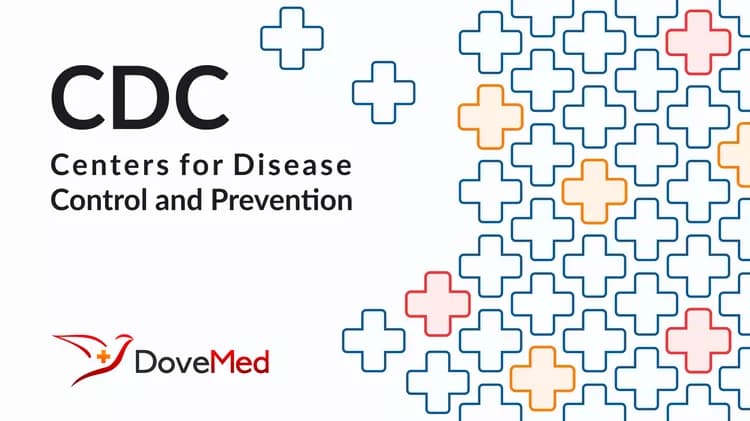
Study finds school-associated violent deaths rare, fewer events but more deaths per event
Study finds school-associated violent deaths rare, fewer events but more deaths per event
Although school-associated violent deaths remain rare events, they have occurred often enough for public health experts to begin to detect patterns and identify potential risk factors according to a new study conducted by the Centers for Disease Control and Prevention (CDC) in conjunction with the U.S. Departments of Education and Justice.
The study published in the December 5th issue of the Journal of the American Medical Association will help school educators, public health officials, law enforcement agencies, parents and others plan and implement better violence prevention efforts in schools.
"We believe that student homicides and suicides that occur in and around schools can be prevented," said Mark Anderson, M.D. of CDC's National Center for Injury Prevention and Control and lead author of the study. "Effective violence prevention strategies have been identified, and the information in this report may assist school administrators and faculty work for safer school communities."
The study examined 220 U.S. events that results in 253 school-associated violent deaths between 1994 and 1999.
Researchers found several emerging trends.
School-associated violent deaths represent less than one percent of all homicides and suicides that occur among school-aged children. Still, when an event occurs, it is a significant cause of alarm and this study begins to identify concerns.
Troubled teens often give potential signals such as writing a note or a journal entry, or they make a threat. In over half the incidents that were examined, some type of signal was given. While CDC doesn't profile specific examples of these signals, it encourages educators and parents to be vigilant and to take the appropriate actions to assist teens exhibiting these behaviors.
While the rate of school-associated violent deaths events has decreased significantly during the study time period, the number of multiple-victim events has increased. It is too early to determine why this is occurring and a follow-on study will continue to examine this trend to help educators and public health officials better understand the problem.
More than fifty percent of all school-associated violent death events occurred during transition times during the school day - either at the beginning or end of the day or during lunch-time. Researchers suggest that efforts to reduce crowding, increase supervision, and develop plans for handling disputes may reduce the likelihood that a conflict or injury might occur.
Homicide perpetrators were far more likely than homicide victims to have expressed previous suicidal behaviors or had a history of criminal charges; been a gang member; associated with high-risk peers or considered a loner; or used alcohol or drugs on a weekly basis. Among students, homicide perpetrators were twice as likely than homicide victims to have been bullied by peers.
The rate of school-associated violent deaths was over twice as high for male students.
The findings do indicate the need for routine surveillance data of school-associated violent deaths, which would assist state public health, education, and criminal justice agencies examine trends and develop prevention programs that are effective for their communities.
"Our nation's schools are among the safest place for children to be - fewer than one percent of the homicides and suicides among school-aged children occur in and around schools," said Bill Modzeleski, director of the U.S. Department of Education's Safe and Drug Free Schools Program. "But, there are many things that school's and communities can do to make them safer - including watching for signals that precede violent outburst, paying attention to threats - including threats of suicide and learning to recognize and respond to bullying behavior. This valuable study makes clear that these should be part of each school's comprehensive violence prevention strategy."
"It is important to remember that school-associated violent deaths are rare, but complex events," said Thomas Feucht, PhD, of the U.S. Department of Justice, National Institute of Justice. "There are no simple solutions; schools and communities need to coordinate their efforts to develop and implement effective violent prevention efforts that address risks to young people at school, at home, and in their neighborhoods."
Strategies to prevent youth violence, which include social and resolution skills, mentoring, and family-based approaches, are outlined in CDC's Best Practices of Youth Violence Prevention: A Sourcebook for Community Action.
###
The Centers for Disease Control and Prevention (CDC) protects people's health and safety by preventing and controlling diseases and injuries; enhances health decisions by providing credible information on critical health issues; and promotes healthy living through strong partnerships with local, national and international organizations.
NOTE TO EDITORS:
This report may be viewed online at
http://jama.ama-assn.org/issues/v286n21/abs/joc11149.html.
Violence prevention information is available online at CDC's National Center for Injury Prevention and Control website http://www.cdc.gov/ncipc.
Safe and Drug-Free Schools Program information is available on the Department of Education website at http://www.ed.gov/offices/OESE/SDFS.
National Institute of Justice information is available on the Department of Justice website at http://www.ojp.usdoj.gov/nij/.
The Division of Adolescent and School Health of the National Center for Chronic Disease Prevention and Health Promotion has several resources available online at http://www.cdc.gov/nccdphp/dash/.
Best Practices of Youth Violence Prevention: A Sourcebook for Community Action may be viewed online at http://www.cdc.gov/ncipc/dvp/bestpractices.htm.
The Surgeon General's Report on Youth Violence may be viewed online at http://www.sg.gov/library/youthviolence/youvioreport.htm.
View the Surgeon General's National Strategy for Suicide Prevention: Goals and Objectives for Action online at http://www.mentalhealth.org/publications/allpubs/
SMA01-3517/SMA01-3517.pdf.
Related Articles
Test Your Knowledge
Asked by users
Related Centers
Related Specialties
Related Physicians
Related Procedures
Related Resources
Join DoveHubs
and connect with fellow professionals

0 Comments
Please log in to post a comment.